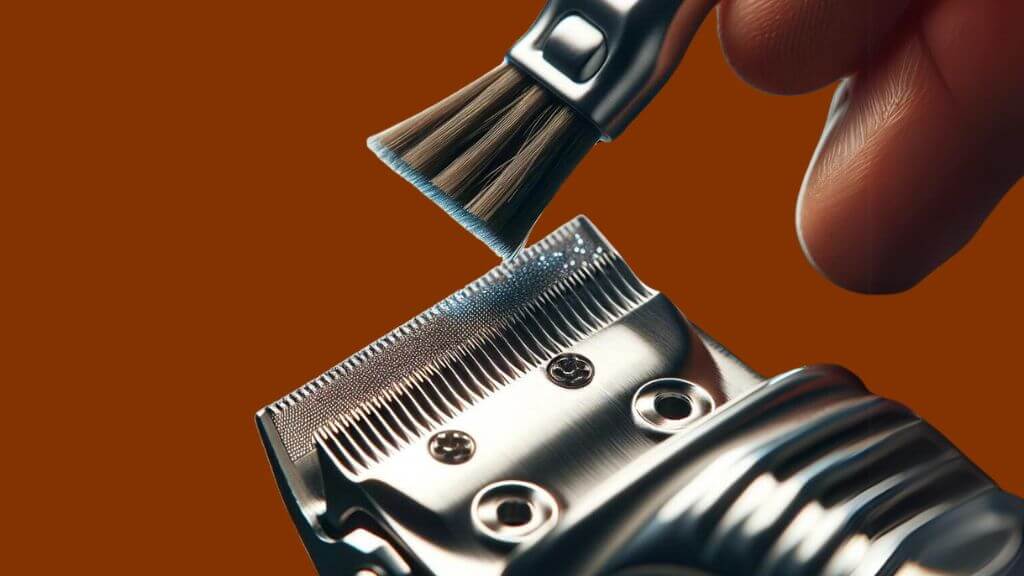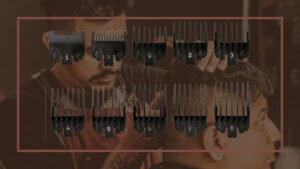
How To Clean Clipper Blades in Only 3 Steps (Guide For Barbers and DIY Guys)
Keeping your clipper blades clean is not just a matter of hygiene; it’s essential for ensuring smooth, precise cuts and extending the life of your tools.
Whether you’re a professional barber who relies on clippers day in and day out, or you simply like to keep your haircut in style by yourself, understanding how to properly clean and maintain your clipper blades is a must. In this guide, we’ll show you how to clean clipper blades most effectively in only 3 steps.
Tools You Need to Clean Clipper Blades
How to Clean Clipper Blades Like a Pro Barber
I’ve seen so many barbers just blow clipper blades after the cut, and that’s it. If this was your barber, well, now you know why your hair has been pulled during the cut session… So, to prevent this common issue, YOU NEED TO BRUSH YOUR CLIPPER BLADES AFTER EVERY CUT!

Just use a soft brush or toothbrush and gently brush it until there is no hair. If there is still hair stuck between the blades, just blow it out. A common reason for this is if you have applied styling products such as gels or pomades and got stuck during the haircut. These products make hair stick to the blades.
Pro tip: Apply a spray to simplify cutting by making hair easier to manage. This will also prevent tiny parts of the hair from being stuck into the blades.

After brushing the hair, use a clipper disinfectant spray or isopropyl alcohol and lightly spray it onto the blades to prevent any potential bacteria or pathogens. Now wait a couple minutes until the blades are air dry and move into the next step.
Also Read: How Do Clipper Guards Work | How To Get Short Hair To Lay Flat : Full Guide | 5 Reasons Why Women Dislike Buzz Cuts

Now that the blades are clean and disinfected, apply a few drops of clipper blade oil onto the blades. Then turn on the clipper for a few seconds to allow the oil to disturbed evenly. Afterwards, wipe off any excess oil with a clean cloth.
And that’s it! Now your clipper is clean and ready for a new haircut. If you haven’t cleaned blades in months, you will feel the blades are much sharper and the cut will feel much lighter than the previous ones.
Do DIY guys need clipper oil?
Well, clipper blade oil is not just for maintenance, it plays a crucial role in extending the lifespan of your clipper and improving performance. If you’re not a barber, you still need clipper oil if you don’t want to replace a clipper every year. One bottle will cost you $5 to $10 max, and it will serve you for a year minimum.
Checking and Adjusting Blade Alignment
This step doesn’t belong in cleaning clipper blades, but it needs to be mentioned. Checking and adjusting blade alignment needs to be done after every cleaning. If your blades are misaligned, it will reduce the lifespan and decrease the quality of a cut.
Troubleshooting Common Issues
Dealing with Overheating Issues: Sometimes, clippers and trimmers can overheat even when cooling sprays are used. This could be due to excessive use, lack of proper lubrication, or internal mechanical issues.
When cooling sprays don’t solve the overheating, ensure the clipper is properly lubricated to reduce friction. If the problem persists, allow the clipper to rest and cool down before using it again. Continuous overheating may indicate a need for professional servicing to check for worn-out parts or internal damage.
Determining the Need for Professional Repair
While many clipper and trimmer issues can be fixed at home, such as replacing dull blades or correcting minor alignment problems, some situations require professional attention. If your clipper or trimmer is still malfunctioning after you’ve performed basic maintenance (cleaning, lubricating, and adjusting), it might have electrical problems, motor issues, or other complex faults.
Signs that suggest the need for professional repair include inconsistent power, unusual noises that persist after cleaning and lubrication, and failure to cut despite having sharp blades. In these cases, it’s best to consult with a professional repair service to avoid further damage and ensure your equipment is properly and safely restored to working condition.
Frequently Asked Questions
Pulling hair could indicate that the blades need oiling or realignment. Apply clipper oil as instructed and check the blade alignment. If the problem persists, the blades may need sharpening or replacing.
Clipper blades should be cleaned after every use to remove hair and debris. This prevents buildup and maintains the sharpness and efficiency of the blades.
It’s best to use oil specifically designed for clipper blades. Household oils can be too thick, may not withstand the heat generated by the clippers, and can attract more debris, leading to a buildup that affects performance.
Conclusion
Cleaning clipper blades can be done in only 3 steps. By doing this, you will uphold the highest standards in hygiene, the cut will feel much lighter and easier to control, and it’ll extend the lifespan of the blades.
By keeping your clipper blades clean, you avoid expensive fixes and replacements. This easy three-step cleaning is a small effort to keep your clippers working well and lasting longer, making them dependable for your grooming needs.


